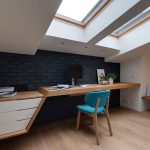We Understand Design Differently
Design is a multifaceted discipline that transcends aesthetics, functionality, and personal expression. At its core, understanding design differently means recognizing that each project or space demands a unique approach tailored to its specific context and purpose.
Holistic Approach
Unlike traditional design methods that may prioritize style or function separately, a holistic approach integrates all aspects of a space. This means considering not just the visual appeal, but also how elements interact with one another and how they influence the user experience. For example, an office design should not only look modern but also enhance productivity and well-being through thoughtful layout and ergonomic furniture.
Contextual Sensitivity
Understanding design differently involves a deep appreciation for the context in which a project exists. This means taking into account local culture, climate, and history. For instance, a home in a coastal region might incorporate natural materials and open layouts to enhance airflow and reflect the surrounding environment, while an urban apartment may focus on maximizing space and integrating smart technology.
Sustainability and Innovation
Sustainable design practices are becoming increasingly vital. This perspective views design as a means to address environmental concerns by incorporating eco-friendly materials and energy-efficient solutions. Moreover, innovation plays a crucial role in modern design, where new technologies and creative problem-solving methods drive functionality and style.
User-Centric Design
At the heart of understanding design differently is a focus on the end-user. This means engaging with users to understand their needs, preferences, and behaviors. Design should cater to human experiences, whether it’s creating a comfortable living environment, an efficient workspace, or an inspiring public space.
Interdisciplinary Integration
Design often benefits from integrating insights from various fields, such as psychology, sociology, and technology. This interdisciplinary approach ensures that design solutions are not only visually appealing but also psychologically impactful and technically feasible.
Conclusion
Understanding design differently means embracing a comprehensive, context-sensitive, and user-centric approach that goes beyond mere aesthetics. By integrating sustainability, innovation, and interdisciplinary insights, design can profoundly enhance the functionality and experience of any space.







